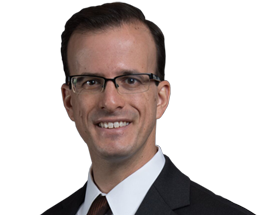
Marc Berman is a politician and attorney, currently serving as a member of the California State Assembly. He is a Democrat representing the 24th Assembly District, encompassing parts of the San Francisco Peninsula and Silicon Valley. Before being elected to the Assembly, he was a member of the Palo Alto City Council.
California has been living off of major civic investments we made in the 1960’s and it is long past time that we refocus on, reinvest in, and strengthen California’s infrastructure – those foundational assets we need to thrive as a state for the next 50 years.
Infrastructure is incredibly important and includes our physical assets, like roads and bridges, as well as water and sewer systems, the electricity grid, and communication systems.
Marc has led the effort to rebuild Palo Alto’s infrastructure:
In 2010, Marc was appointed to Palo Alto’s Infrastructure Blue Ribbon Commission (IBRC), which developed a comprehensive plan for Palo Alto to repair its infrastructure backlog and put measures in place to ensure it doesn’t fall behind again.
As a member of the Palo Alto City Council, Marc has led the effort to identify and set aside the funding necessary to implement the IBRC’s plan for public safety, street, sidewalk, and park improvements.
Marc’s work to rebuild Palo Alto’s infrastructure has led to a fully funded plan to:
Replace two fire stations that were built in 1948 and 1953;
Build a new, seismically safe public safety building (police department, 911 emergency dispatch, and emergency operations center) that has been at the top of the city’s infrastructure needs for over two decades;
Make Palo Alto’s roads the best in the Bay Area by bringing the pavement condition index up to a score of 85 by 2019; and
Fully fund the bicycle and pedestrian master plan to make it safer and easier for residents to get around town without using their cars.
San Diego’s leading car-sharing company recently announced it is transitioning its fleet of all-electric vehicles to those powered by gas due to a lack of available EV charging stations. 68% of California’s roads are in poor or mediocre condition and 47% of our bridges – which are typically built to last 50 years – are more than 50 years old. Another 20% are between 40 and 49 years old.
These deficiencies aren’t acceptable in a state as forward-thinking and innovative as California. It is imperative that we re-invest in our infrastructure so that we’re positioned to grow and compete in the 21st century economy, including:
Repairing our crumbling highways. A recent national study ranked California’s highways as the worst in America, with 51% rated poor. This costs California motorists $44 billion a year in extra vehicle repairs and congestion-related delays. Drivers in the Bay Area pay an extra $1,700 a year. By 2028, no stretch of California state highway should be in poor condition.
Developing a statewide network of electric vehicle charging stations. Governor Brown has set a goal of 1.5 million zero-emission vehicles on the road by 2025. But while we have encouraged automakers to develop these vehicles, and consumers to purchase them, we haven’t installed a network of electric vehicle charging stations capable of reliably keeping these vehicles on the road. By 2028, California must have a statewide network of charging stations capable of meeting current and future demand.
Improving access to faster broadband. Our economic growth and competitiveness is increasingly determined by access to fast, reliable broadband service. Yet only 62% of Californians have access to broadband speeds of 100mbps or higher, with residents in rural and coastal communities disproportionately impacted by lack of access. By 2028, all Californians should have access to higher broadband speeds that unlock greater educational and commercial opportunities.
Modernizing our energy grid. California is leading the nation in the development and deployment of renewable energy. We’re on pace for 50% renewable energy by 2030. But our energy grid hasn’t kept pace with our innovation in clean energy. By 2028, we must build a smart, clean energy grid that better manages peak demand, empowers consumers to monitor and manage their energy use, and more efficiently delivers energy to end users.